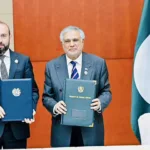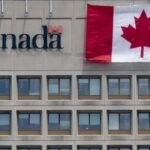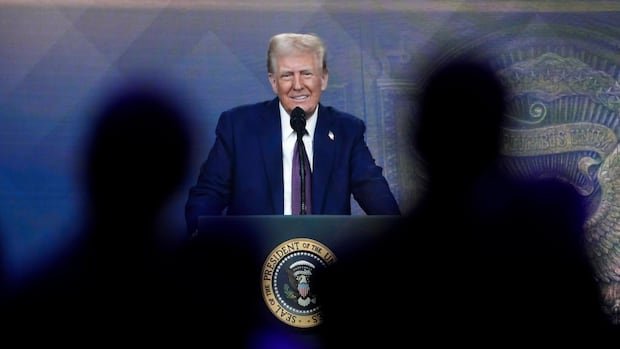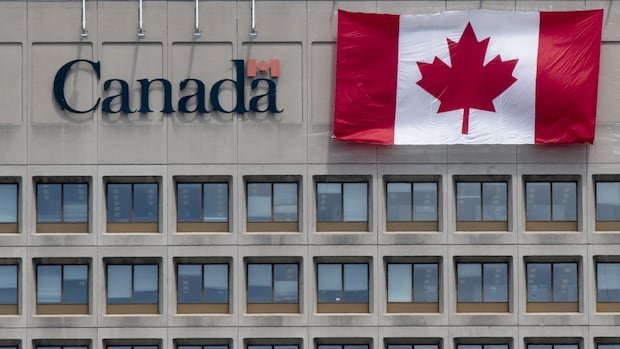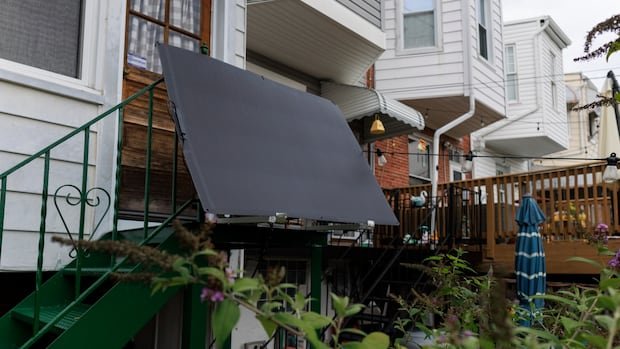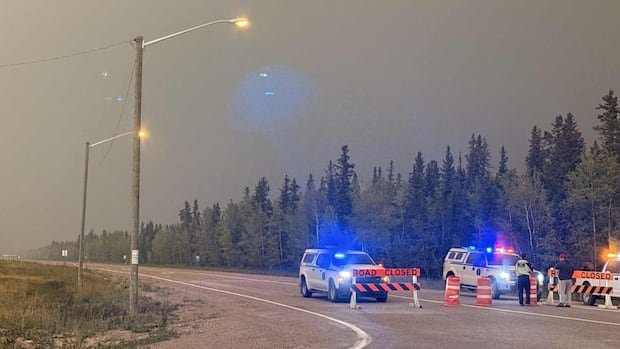Donald Trump first used an international venue Thursday for his surprising suggestion that the United States get an additional state: Canada.
In his first global event since assuming the US presidency earlier this week, Trump spoke via video conference at the Davos economic forum in Switzerland.
His speech and the subsequent question-and-answer session offered an early example of the pressure put on various allies. predicted for your presidency.
What was least predicted, until recently, was the intensity of that pressure, the frequency with which it focused on Canada and its rhetorical attacks on its sovereignty.
Trump came with a broad message to the international business community: build in America or face severe tariffs.
“Come make your product in America and we’ll give you one of the lowest taxes of any nation in the world,” Trump said, somewhat exaggerating the US corporate tax advantage.
“But if you don’t make your product in the United States, which is your prerogative, then, quite simply, you’re going to have to pay a tariff.”
And while he harshly criticized several U.S. allies, including the European Union, he continued to disparage Canada to some extent.
Trump has threatened to impose harsh tariffs on the United States’ North American neighbors as soon as next week, although he also signed a executive order That suggests a longer time horizon, calling for a study of North America’s borders by April 1.
That same order suggests Trump is seeking to apply pressure on additional fronts. It refers to the planned review of the North American trade agreement and also orders its officials to report on trade deficits and on foreign taxes that affected American companies.
In his speech in Davos, he again complained about the United States’ trade deficit with Canada, which is real, but a fraction from the US$200 billion to US$250 billion that Trump claimed in his speech, and tends to rise and fall with the price of oil that Americans import.
“We’re not going to have that anymore. We can’t do it,” Trump said, during a lengthy talk about Canada.
At the World Economic Forum in Davos, Switzerland, Donald Trump repeated his “51st State taunts,” saying the United States does not need imports of oil, gas, cars or lumber from Canada and calling on all NATO member countries to increase their defense spending.
“As you probably know, I say, ‘You can always become a state, and if you’re a state, we won’t have a deficit. We won’t have to impose tariffs on you.'”
He complained that Canada has been difficult to deal with and repeated his previous complaints that we don’t need their products: “We don’t need them to make our cars, and they make a lot of them. We don’t need their wood because we have our own forests. We don’t need its oil and gas.
-
This Sunday, Cross country check question: From vacations to shopping to business, how is the Trump presidency changing your plans? What is your plan B? Fill out this form and you can appear on the show or have your comment read on air.
The facts are not so simple. Regarding oil, for example, it is true that the United States is approaching to self-sufficiency than in decades, but it is remains a net importeroverwhelmingly from Canadaand its refineries are designed to receive Canada’s heavy crude oil.
What is indisputably real is the economic pressure it is exerting on several fronts.
It’s not just the threat of the 25 percent tariff, although that’s bad enough. Companies are bracing for damage and some, like Honda, have voiced nervousness about its production plans in Canada.
And it’s not just about Trump’s other trade threats. It is also the massive deregulation effort it has launched into critical minerals, oil and gas, which risks attracting investment to the United States from other countries.

There is also military pressure. Trump previously threatened to leave NATO countries defenseless if they do not increase defense spending; and upped the ante in Davos.
Trump said Thursday that he will demand that NATO countries increase military spending to a staggering five percent of GDP. No NATO country has reached that level and most They’re not even close. Few are even halfway there. The United States is at 3.4 percent.
In Ottawa, Prime Minister Justin Trudeau noted that Canada has nearly tripled its defense budget and recently fiance to meet NATO’s current target of 2 percent. He won’t happen However, for years, according to a parliamentary control body.
Canada will have ample opportunities to discuss these issues with Trump at several international forums this year.
There is the G7 in Alberta in June, then the NATO summit in Europe later that month, although both events could occur after the federal elections.
Meanwhile, Trump is breaking generations-old norms in the Canada-U.S. relationship, publicly questioning Canada’s sovereignty in a way no American politician has done in more than a century.
But all this talk about statehood will remain entirely hypothetical if American public opinion has anything to do with it. Several polls (from the Wall Street Journal, Reuters-Ipsos and The Economist-YouGov) conducted in recent days suggest that the idea of annexing Canada is wildly unpopular.


